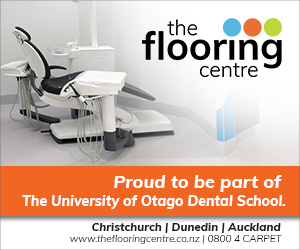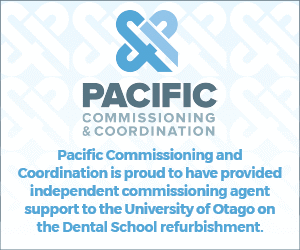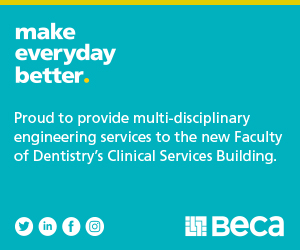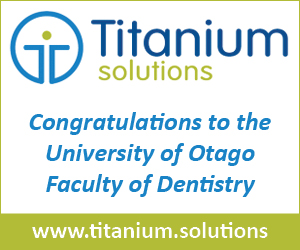
What it means for patients
Patients will reap benefits from faster ways for specialties to work together on their care – while also having more dental chairs, new surgical areas and instantly seeing images from inside their mouth on a computer screen.
Collaborating on patient care is easier because all new patient records are electronic, so instead of circulating a paper file, people can consult a patient’s record simultaneously from different locations.
In patient clinics, staff and students now see a patient’s record on a computer screen on the dental chair – including the assessment, prevention, restoration and rehabilitation work others have done or are planning.

A digital camera on the chair can show patients their teeth in real time on the screen – and can take photos for the patient’s record.
Any scans or radiographs can be shown to patients on that screen as well, while discussing treatment options.
Those scans and radiographs are now performed more seamlessly because the patient clinics have additional radiography imaging machines, so fewer patients go to a dedicated area for scans and radiographs, and the results can be seen almost immediately on the chairs’ screens.
Confidentiality
As in any health environment, staff and students are only allowed access to relevant patients’ files and sign a confidentiality agreement.
Previously, only patients’ names, contact details and financial records were kept electronically, everything else was in paper files taken from one place to another as patients were assessed and treated, during about 76,000 visits annually from the public.
In the new building, all new files are completely electronic because the electronic patient management system Titanium has been broadened to cover more tasks.
Fees
Having an electronic system also helps solve one of the most common complaints from patients – that they did not know what their treatment was going to cost.
Staff and students use a fee schedule to calculate costs then print estimates to discuss with patients before treatment starts (previously, administration staff worked out the cost from patients’ files and sent a bill). This University service will continue to provide patients with quality treatment at an attractive cost, recognising patients play a role in helping to educate the students.
Surgeries
The new building includes an operating theatre and three surgical procedure rooms with the latest equipment, and a modern recovery area.
More chairs
The patient clinics have 214 new chairs – 61 more than previously – including one that lifts people’s own wheelchairs so they can be treated in them and doubles as a chair for larger patients.
Stopping infection
The chairs’ computerised self-cleaning systems ensures infection prevention is stringent.
Equipment will also be able to be tracked digitally from sterilisation to the chair and back again, visibly improving quality control.
All sterilisation is centralised, with physical barriers between areas that accept equipment for cleaning and sterilising and areas which distribute clean equipment.
Use starting
The new building’s Primary Care Unit (urgent care and tooth extractions) started treating patients early this month.
All the public treatment clinics will open when the second semester starts on 8 July.
A new way in
All dentistry patients now use the new public entrance in Frederick Street, and that will continue until the refurbishment of the neighbouring Walsh Building is completed in late 2020.
The temporary entrance opens into a four-storey atrium and reception added between the new building and the existing Walsh Building.
Previously, patients had been arriving at the Walsh Building – dubbed ‘the dental school’ – in Great King Street, since 1961.
It will become the entrance again once refurbished, but the public will merely walk through that building to get to the atrium and the new building.
For more stories about this exciting project see the following:
University of Otago Dental Building Upgrade
Benefits for Students and Staff with the Dental Building Upgrade
Otago Subcontractors Playing an Important Role in the Dental Building Upgrade







































